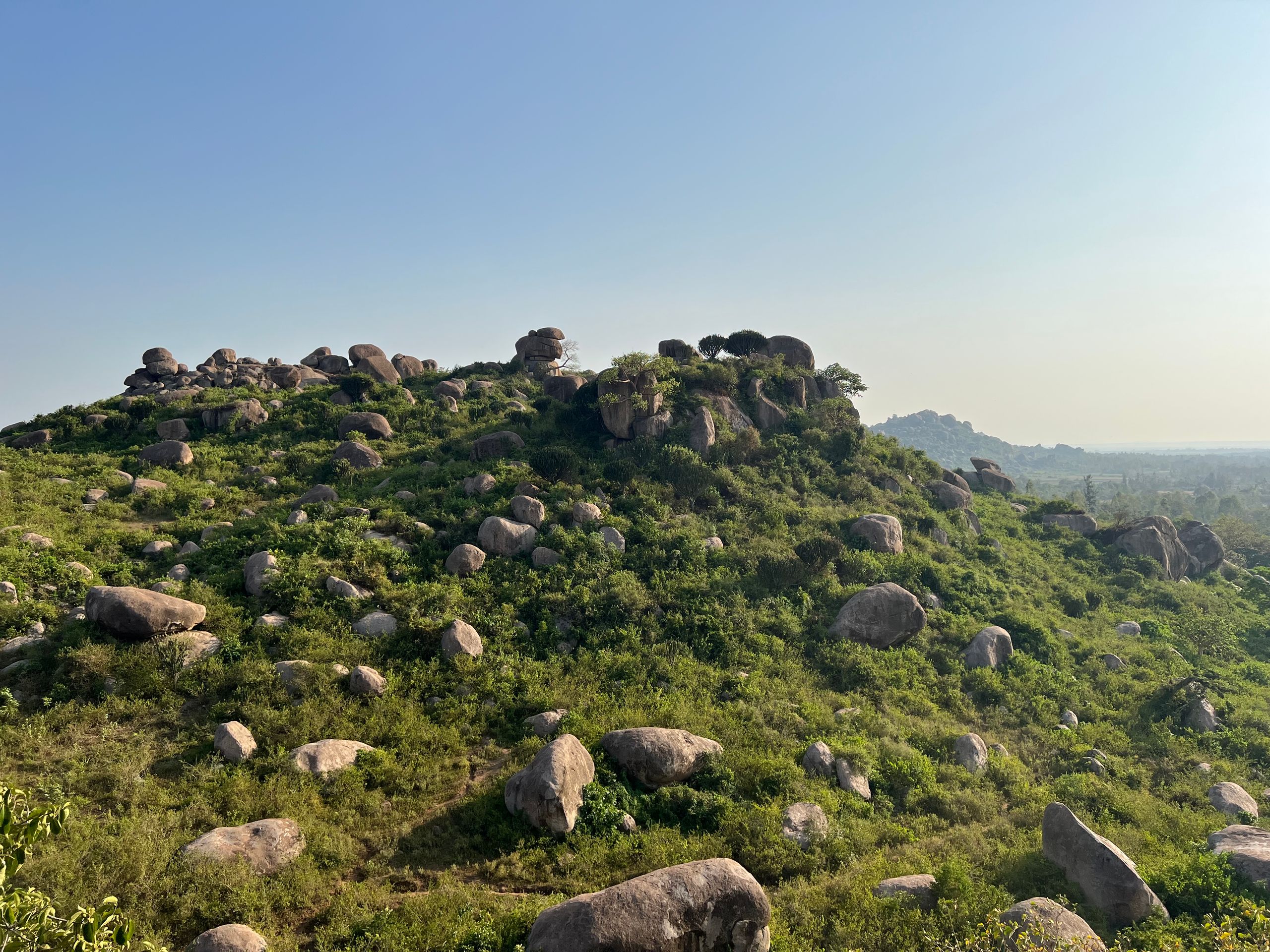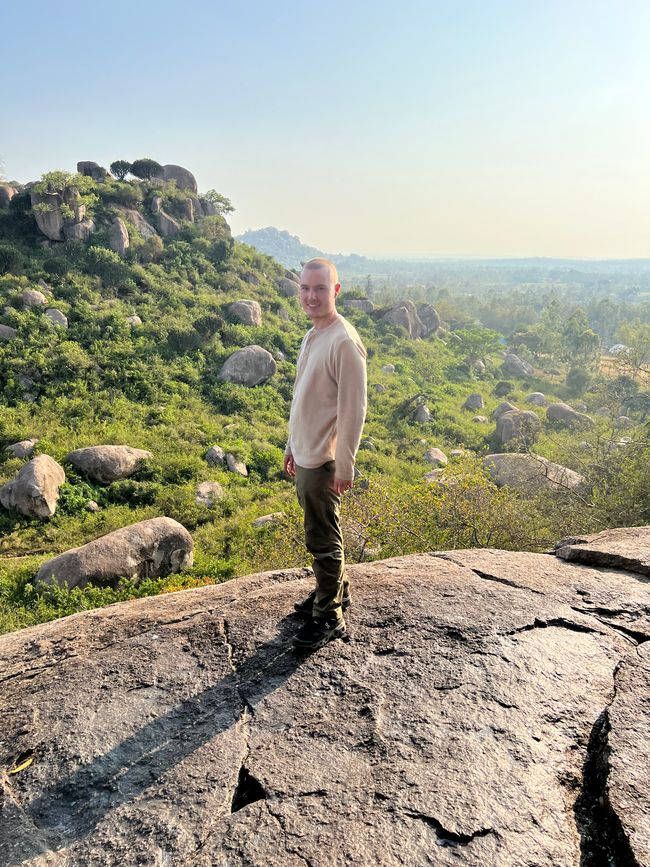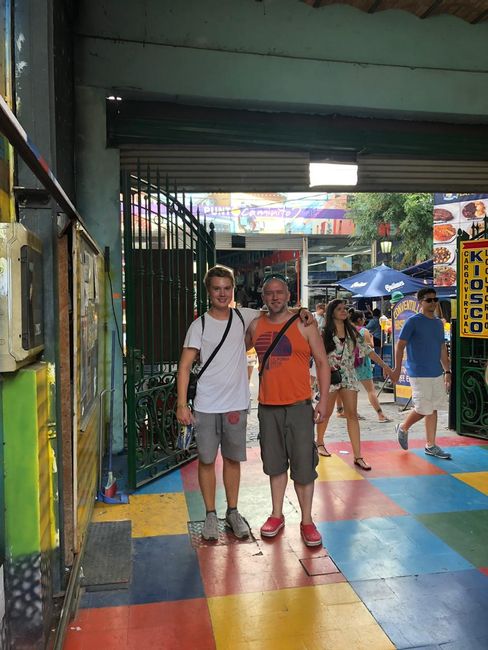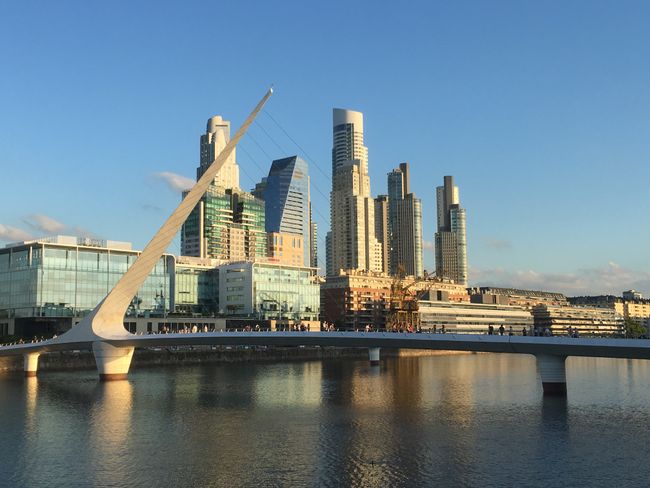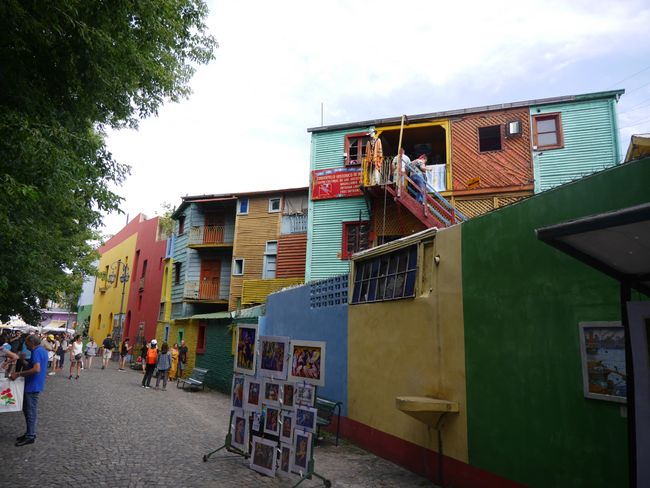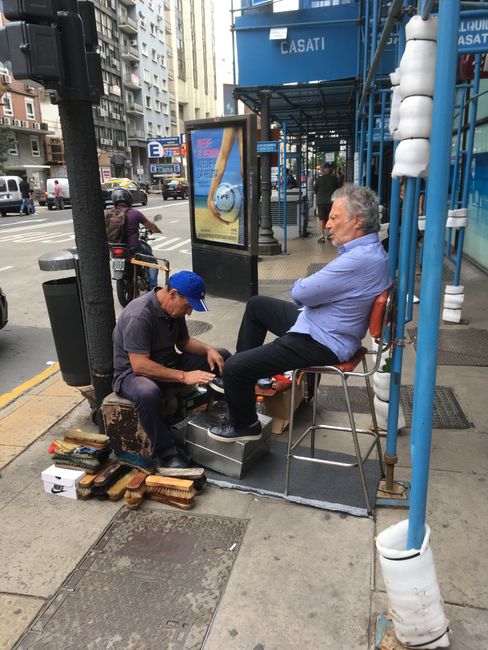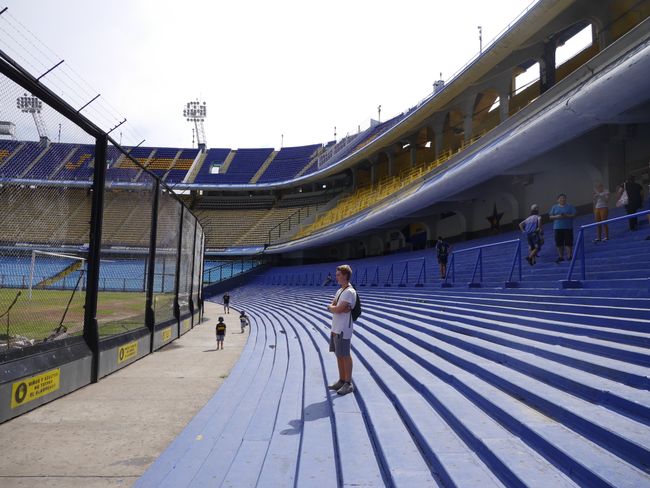welcome to Argentina
Atejade: 12.01.2019
Alabapin si iwe iroyin
Tag 100
The hundred is up. This means that the number of days we are on the road is in triple digits. I am sitting at a table in the courtyard of our hostel in Neuquén, a larger city in the interior of the country. It is afternoon and it is a pleasant 26 degrees. It is quiet, the wind glides past me, and I listen to music. In front of me, a cat sits on a staircase, staring at me. We have been in Argentina for six days. And already 1200 kilometers away from Buenos Aires, this is the distance we may have covered in two weeks in New Zealand.
We don't have much planned for today, anyway. Neuquen serves as a three-day stopover on our way to the Andes in the west of the country.
Tomorrow we will continue to Bariloche, a small town right on the Andes, surrounded by seven different lakes.
We have been here in this new huge country for six days now. Four days we were in the capital Buenos Aires, the second largest city in South America.
We arrived at the airport on Sunday afternoon, even though we flew from New Zealand on Sunday evening, which was already strange. The airport looked like any other at first, and only when we left, did we realize that we were in South America. 30 degrees, humid air, noise, hundreds of cars racing around us, and everywhere "Taxi? Taxi?". We became particularly aware of the fact that we were no longer in New Zealand when we took the bus. A loud, rickety, and incredibly old bus stops for five seconds, everyone gets on and off the bus before anyone has even paid, let alone closed the door. On the other hand, the payment system is very modern and exemplary, as you don't pay cash on the bus, but everyone has a blue card that can be recharged at any kiosk and then you only have to hold it briefly against a sensor on the bus. When we bought the card and loaded some money onto it, we also noticed how cheap bus travel is, with just 30 cents for a three-quarter hour bus ride from the airport to the city center. In Lübeck, you couldn't even ride half a station with that amount of money. On the way to the city center, we got a first impression of the size and extent of this city and we saw the people and the European architecture. And at every bus stop, of course: full braking, everyone gets on quickly, and then off we go again. When we arrived at our hotel, we were naturally quite exhausted and there wasn't much more to do than go to the next supermarket once and quickly get a pizza. The next day, unfortunately, it looked similar, as I was hit by a considerable jet lag due to the long flight to the east. Nevertheless, we strolled through the city a bit and towards Plaza de Mayo, the heart of the city center. We were glad to finally see culture and old tall buildings that were older than twenty or thirty years and were not referred to as "historic" as soon as they were a hundred years old, as in New Zealand. After that, we were at the port, which was really fancy with a small brick-built warehouse district and a modern skyline in the background of a river. In general, Buenos Aires is very fancy. The Portenos, as the residents are called, often wear a shirt and long pants even in temperatures over 30 degrees, and the shops and cafes also have a very noble flair. However, the contrast is not far away either. You only need to walk ten minutes past well-kept parks and modern skyscrapers and businessmen, then you will reach the main train station Retiro, adjacent to the slum "Villa 31". When we were there, we could hardly believe our eyes and felt as if we were in a documentary about third world countries. If you walk past the train station, there is an alley into this slum, in front of which four policemen stand and prevent anyone who does not look Argentine from entering. "Es muy peligroso". "It is very dangerous," said a policeman when we asked if we could go in there. He also said that we would be robbed and injured because we looked very touristy. Of course, we did not go into this alley and the atmosphere around the train station was enough of an impression for us. On the way to the bus station next door, where we wanted to book the ticket to Neuquen, a small boy, about ten years old, asked me in Spanish if I wanted to buy marijuana. I laughed, and he asked me if I wanted to buy cocaine instead. He was serious and disappeared with his torn pants and tousled hair into the streets of poverty from which he had come. Argentinians approached us every ten minutes and warned us to be very careful in this area and to always keep an eye on our valuables. But it happened so often that we don't really know if the Portenos are exaggerating somewhere. Of course, it is a tough area and you certainly have to be careful. But what we noticed is that the residents, throughout Buenos Aires, even in the safe center of the city, kept telling us to be careful. If you only ask someone for directions, they will describe it to you, but after saying goodbye, there is always a "Be careful". We never felt unsafe at any time, not even at the train station. Two Germans we later got to know, who are doing a voluntary social year here in Buenos Aires for half a year, confirmed this and said that outside of the slum, you might encounter scammers at most, who target individuals at night. And only in some neighborhoods. When we come back to the capital in a few weeks, we will remember this, but of course, we will still be careful.
The next day was very special. After five years, I saw my former trumpet teacher Martin again, who went back to his home country Argentina after his time in Lübeck in 2014. He grew up in Buenos Aires and now lives there again with his wife, with whom he recently had a child who is only four months old but (of course) already has his own trumpet.
He walked us through the colorful and lively working-class neighborhood La Boca and told us a bit about his city and answered our questions. We also went to the famous "Bombonera" witch's cauldron, where the Boca juniors play, and in addition to the football-crazy Argentines, we were also allowed to touch the holy lawn. On the way back, we went through a pedestrian zone where the houses were painted in every possible color, and there were also many cafes, music, and small shops. In the evening, we ate an Argentine steak (450gr) in a real "Parilla". Martin also asked us where we were heading next, and when we told him that we were going to Bariloche, he gave us the contact of a friend who lives nearby and would be happy to host us for a few days. He also invited us to his birthday, which we could attend when we are in Buenos Aires again in early April. It was very nice to see him again, and I am looking forward to when we are back.
On Thursday, we took the overnight bus on an 18-hour journey to the southwest to Neuquen. The long-distance buses here in Argentina are quite comfortable and comparable to the business class on an airplane. Only much cheaper. So the long journey was anything but exhausting, and now we are here, in the middle of the interior, where we haven't seen a single tourist yet.
I am curious to see if it stays that way in the Andes, although I don't believe so. We will see.
First of all, we will go to the supermarket now and later try out how the grill works here in the hostel. Tomorrow we will already be on the other side of the country. On the west side. And from then on, we will continue southwards, towards Patagonia.
Alabapin si iwe iroyin
Idahun (2)
Holger
Te deseo mucha diversion..... ich wünsche euch viel Spass... ciaoZero
Danke!
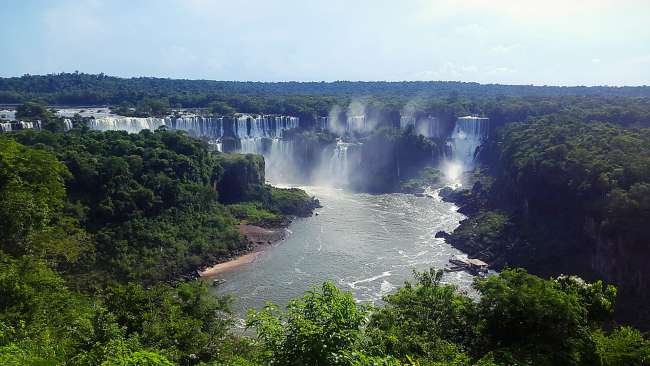
Awọn ijabọ irin-ajo Argentina
